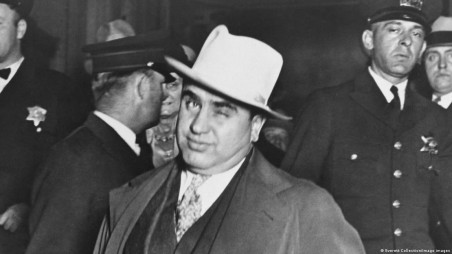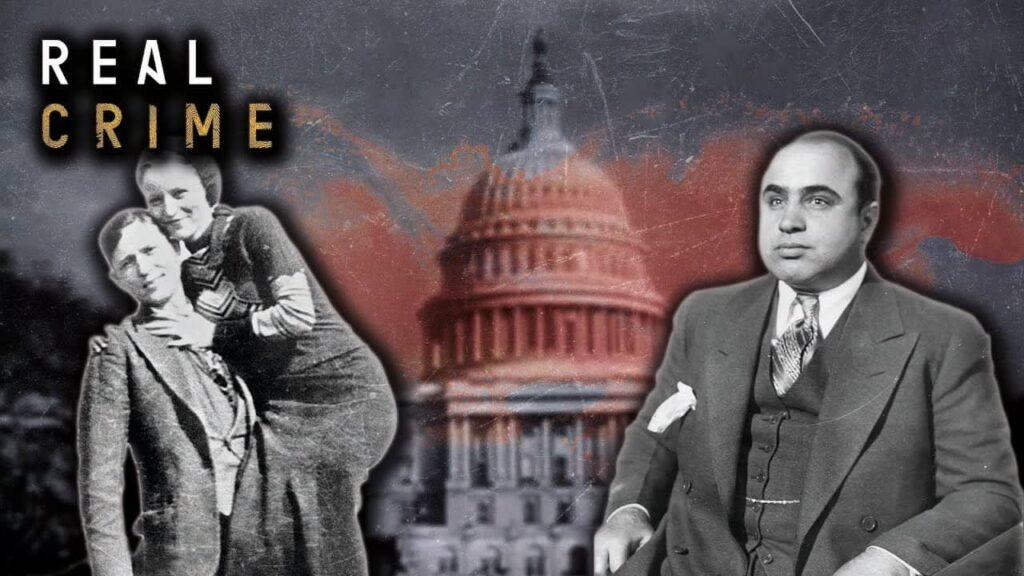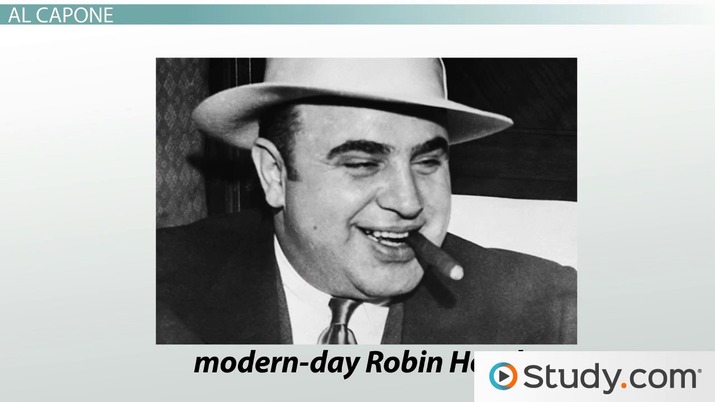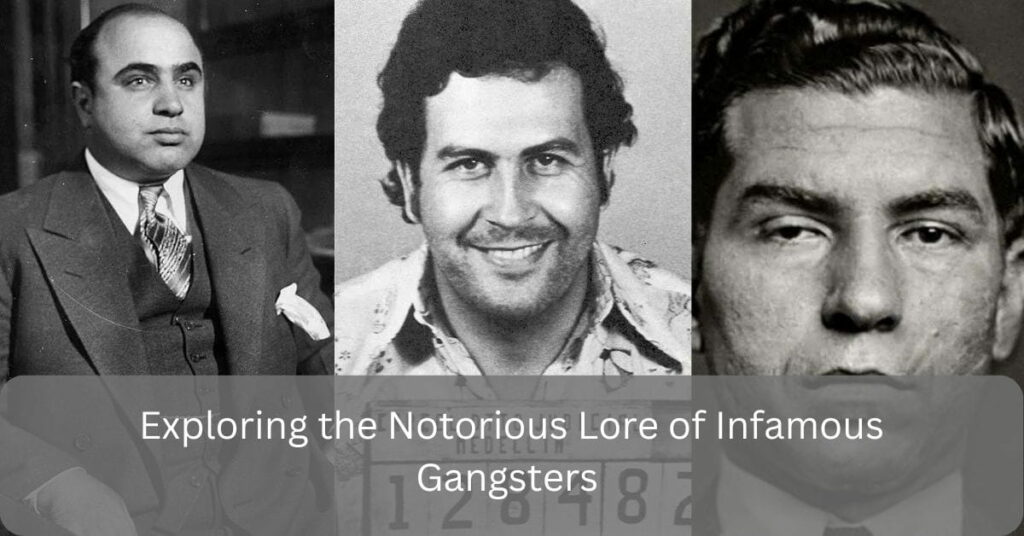Infamous gangsters have long captured the imagination of the public, their exploits becoming the stuff of legend and lore. From the dark alleys of Prohibition-era America to the bustling streets of modern-day metropolises, these figures have left an indelible mark on history. In this article, we delve into the lives and deeds of infamous gangsters, examining their rise to power, their criminal enterprises, and their eventual downfall.
The Birth of Notoriety:

The term “infamous gangsters” conjures images of shadowy figures operating outside the bounds of the law. Indeed, these individuals often rose from humble beginnings, finding opportunity in the chaos of their times.
Names like Al Capone, John Dillinger, and Bonnie and Clyde loom large in the annals of crime, their exploits etched into the collective consciousness.
Prohibition-Era Pioneers:
The era of Prohibition in the United States provided fertile ground for the rise of infamous gangsters. With the sale of alcohol banned, organized crime syndicates flourished, supplying a thirsty populace with bootlegged liquor.
Figures like Al Capone, with his iron grip on the Chicago underworld, became synonymous with the illicit trade, earning both fear and admiration in equal measure.
The Roaring Twenties and Beyond:
As the Roaring Twenties gave way to the Great Depression, infamous gangsters continued to thrive, their operations expanding into new territories and illicit enterprises.
Bank robberies, extortion, and racketeering became commonplace, with figures like John Dillinger and Pretty Boy Floyd gaining notoriety for their brazen heists and daring escapes.
The Rise of Organized Crime:
Infamous gangsters were not merely petty criminals but savvy entrepreneurs, building vast criminal empires through ruthless ambition and cunning.
From the Five Families of New York City to the Outfit in Chicago, organized crime syndicates wielded immense power, controlling everything from gambling and prostitution to labor unions and political corruption.
The Downfall of Legends:
For all their power and influence, infamous gangsters were not immune to the long arm of the law. High-profile arrests, bloody turf wars, and internal betrayals often spelled the downfall of these once-untouchable figures.
Al Capone’s conviction for tax evasion, John Dillinger’s fatal encounter with law enforcement, and Bonnie and Clyde’s violent demise are stark reminders of the precarious nature of criminality.
Legacy and Myth:
Despite their eventual downfall, infamous gangsters continue to fascinate and captivate audiences to this day.
Their stories have been immortalized in books, films, and television shows, transforming them into larger-than-life figures whose exploits have become the stuff of legend.
The allure of the outlaw, the romanticism of rebellion, and the thrill of danger ensure that the legacy of infamous gangsters endures.
The Infamous Gangster Mythos:

Beyond their criminal activities, infamous gangsters cultivated personas that bordered on mythic. They were often portrayed as modern-day Robin Hoods, robbing from the rich and giving to the poor, even as their true motivations were far more self-serving.
Yet, there is no denying the charisma and magnetism these figures possessed, drawing followers and admirers into their orbit with ease.
From their tailored suits to their flashy cars, infamous gangsters projected an image of power and sophistication that captured the public’s imagination and inspired countless imitators.
The Shadowy World of Informants and Betrayals:
Despite their outward displays of loyalty and camaraderie, the world of infamous gangsters was rife with betrayal and treachery. Informants, or “rats” as they were often called, lurked in the shadows, feeding information to law enforcement in exchange for leniency or protection.
These betrayals could have deadly consequences, as rival gangsters sought revenge for perceived slights or breaches of trust.
The constant threat of betrayal kept infamous gangsters on edge, never knowing who they could truly trust in their quest for power and riches.
The Global Reach of Organized Crime:
While infamous gangsters like Al Capone and John Dillinger may be synonymous with American crime, the influence of organized crime syndicates extends far beyond the borders of the United States.
From the Sicilian Mafia to the Russian Bratva, criminal enterprises operate on a global scale, trafficking in drugs, weapons, and human beings with impunity.
The rise of the internet has only further facilitated the spread of organized crime, allowing criminal networks to communicate and conduct business across continents with ease.
The Modern-Day Legacy of Infamous Gangsters:
Though the heyday of infamous gangsters may seem like a relic of the past, their legacy continues to shape the world we live in today.
The tactics and strategies pioneered by figures like Al Capone and Lucky Luciano still influence the operations of organized crime syndicates around the world.
Moreover, the romanticized image of the outlaw persists in popular culture, perpetuating the myth of the infamous gangster as a folk hero fighting against the injustices of society.
As long as there are those willing to flout the law and exploit the vulnerabilities of the system, the legacy of infamous gangsters will endure, reminding us of the dark underbelly of human nature and the allure of forbidden fruit.
The Rise of Female Gangsters:
While infamous gangsters are often portrayed as male-dominated figures, there were also notable women who made their mark in the criminal underworld.
Figures like Ma Barker and Bonnie Parker of Bonnie and Clyde fame challenged traditional gender roles, participating in bank robberies and other criminal activities alongside their male counterparts.
These women were often romanticized in the media, portrayed as gun-toting sirens who defied societal norms and lived life on their own terms.
However, their involvement in crime also highlights the pervasive nature of inequality and desperation during their time.
The Evolution of Gangster Culture:
As society has evolved, so too has the culture surrounding infamous gangsters. What was once seen as a glamorous and daring lifestyle is now often viewed through a more critical lens, highlighting the violence, exploitation, and suffering that often accompany criminal enterprises.
Yet, despite this shift in perspective, the allure of the outlaw persists, with modern-day gangsters idolizing the infamous figures of the past and seeking to emulate their success.
The rise of social media has also allowed for the glorification of gangster culture, with aspiring criminals using platforms like Instagram and YouTube to showcase their wealth, power, and connections.
The Fight Against Organized Crime:

Despite the enduring legacy of infamous gangsters, law enforcement agencies around the world continue to wage war against organized crime syndicates.
From specialized task forces to international collaborations, efforts to dismantle criminal enterprises are ongoing and multifaceted.
However, the fight against organized crime is far from easy, with corrupt officials, deep-rooted networks, and vast financial resources often complicating matters.
Nevertheless, law enforcement agencies remain committed to combating the influence of infamous gangsters and dismantling their criminal empires, recognizing the profound impact these figures have on society as a whole.
Conclusion:
Infamous gangsters occupy a unique place in the annals of history, their lives and deeds serving as cautionary tales and cautionary inspirations in equal measure. From the speakeasies of the 1920s to the mean streets of contemporary urban centers, their influence continues to reverberate, reminding us of the thin line between infamy and immortality in the world of crime. As long as there are those willing to defy the law and challenge the status quo, the legend of infamous gangsters will live on.
